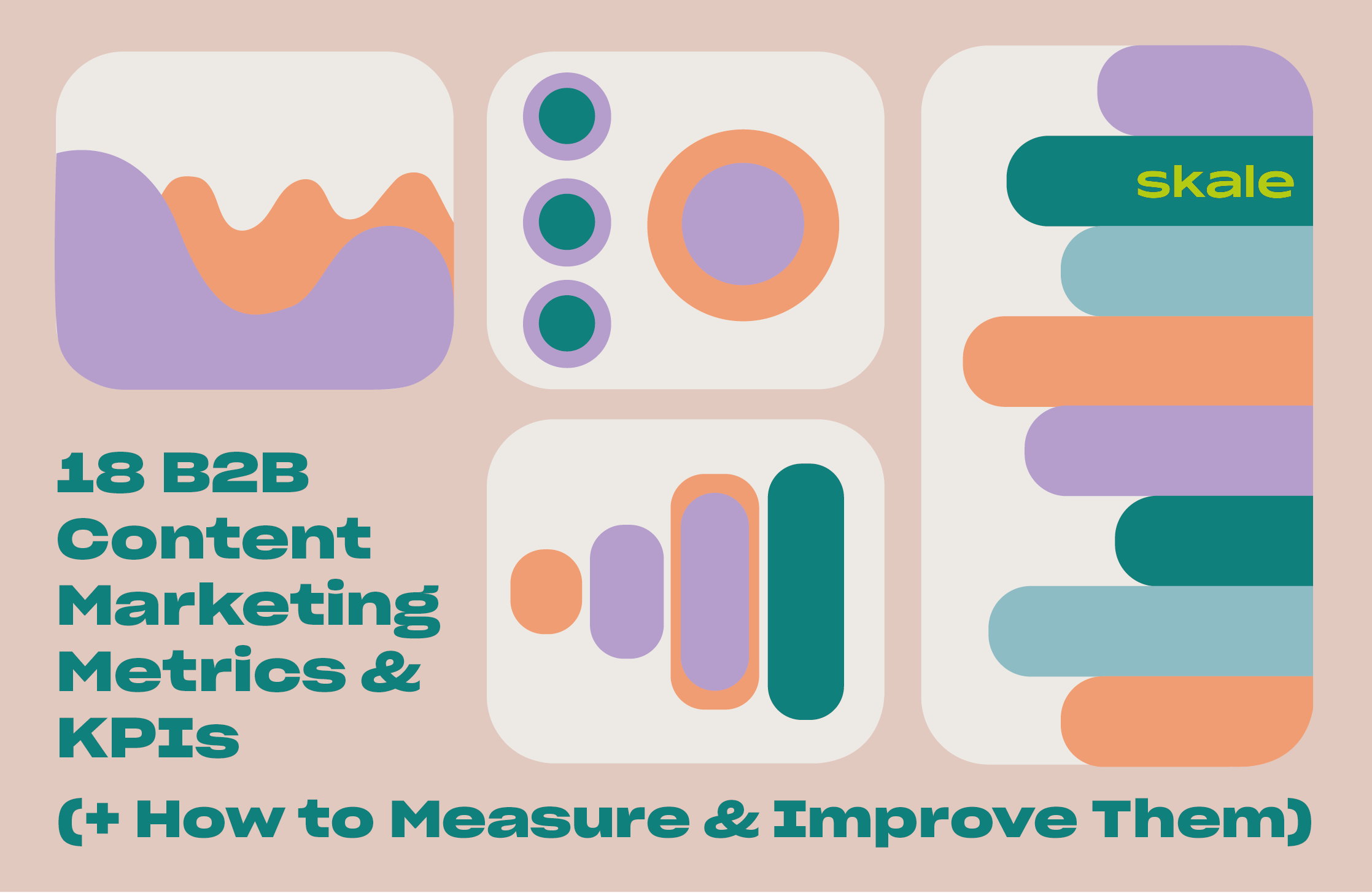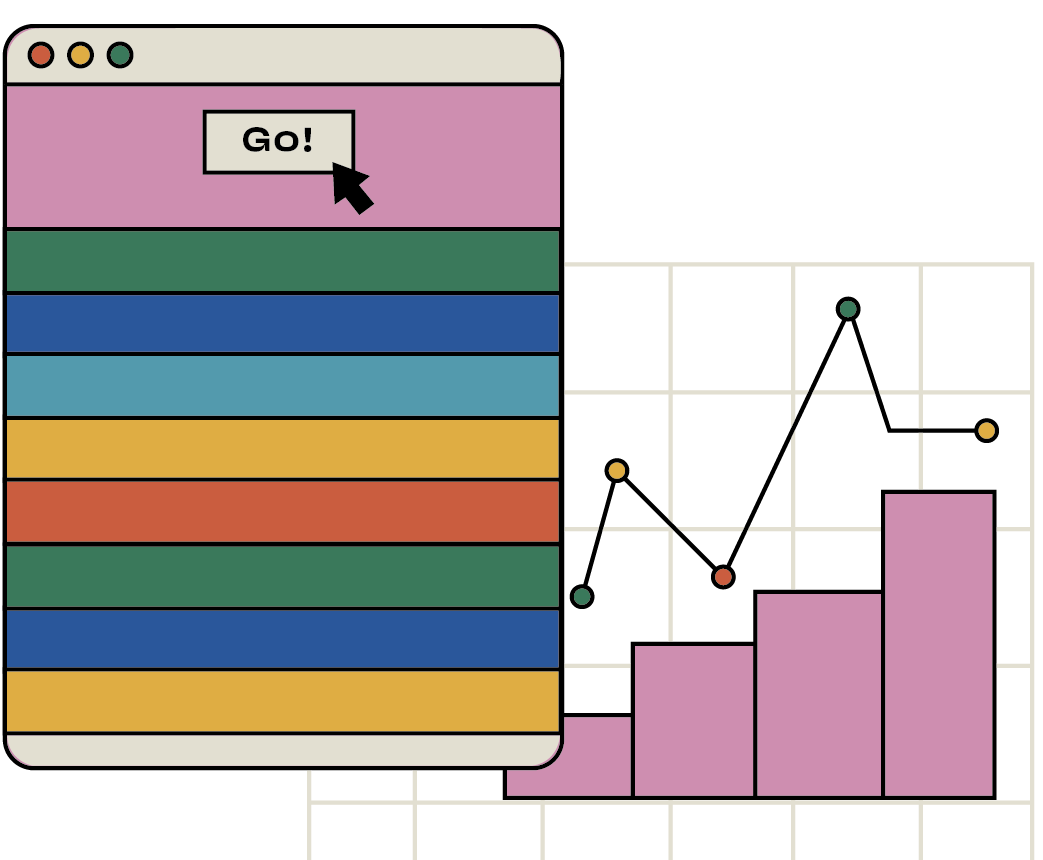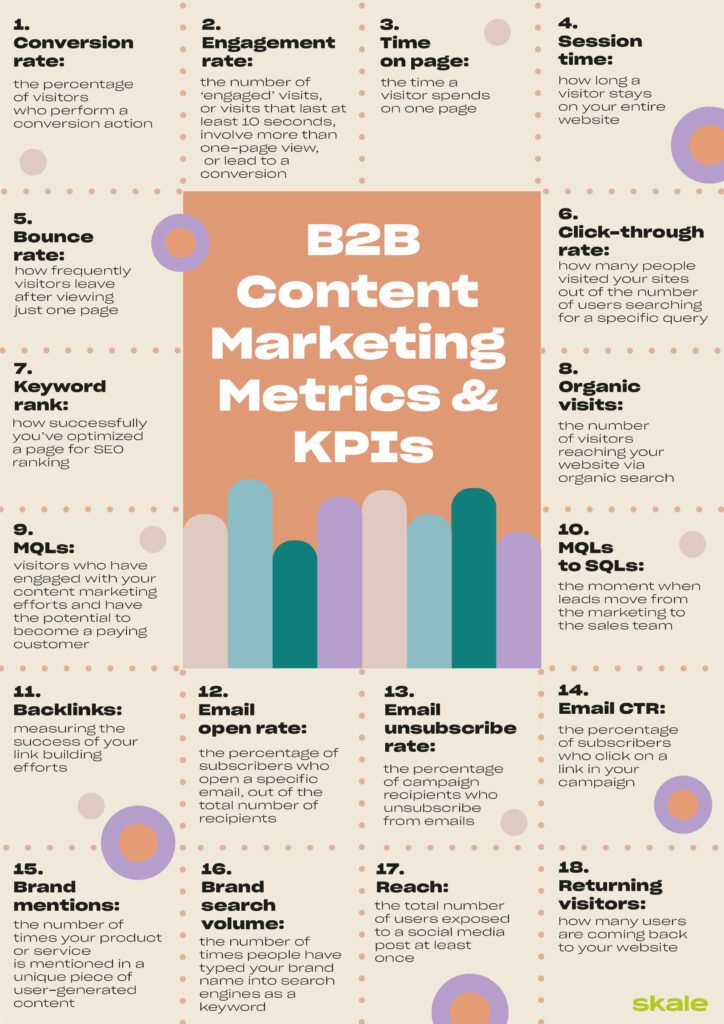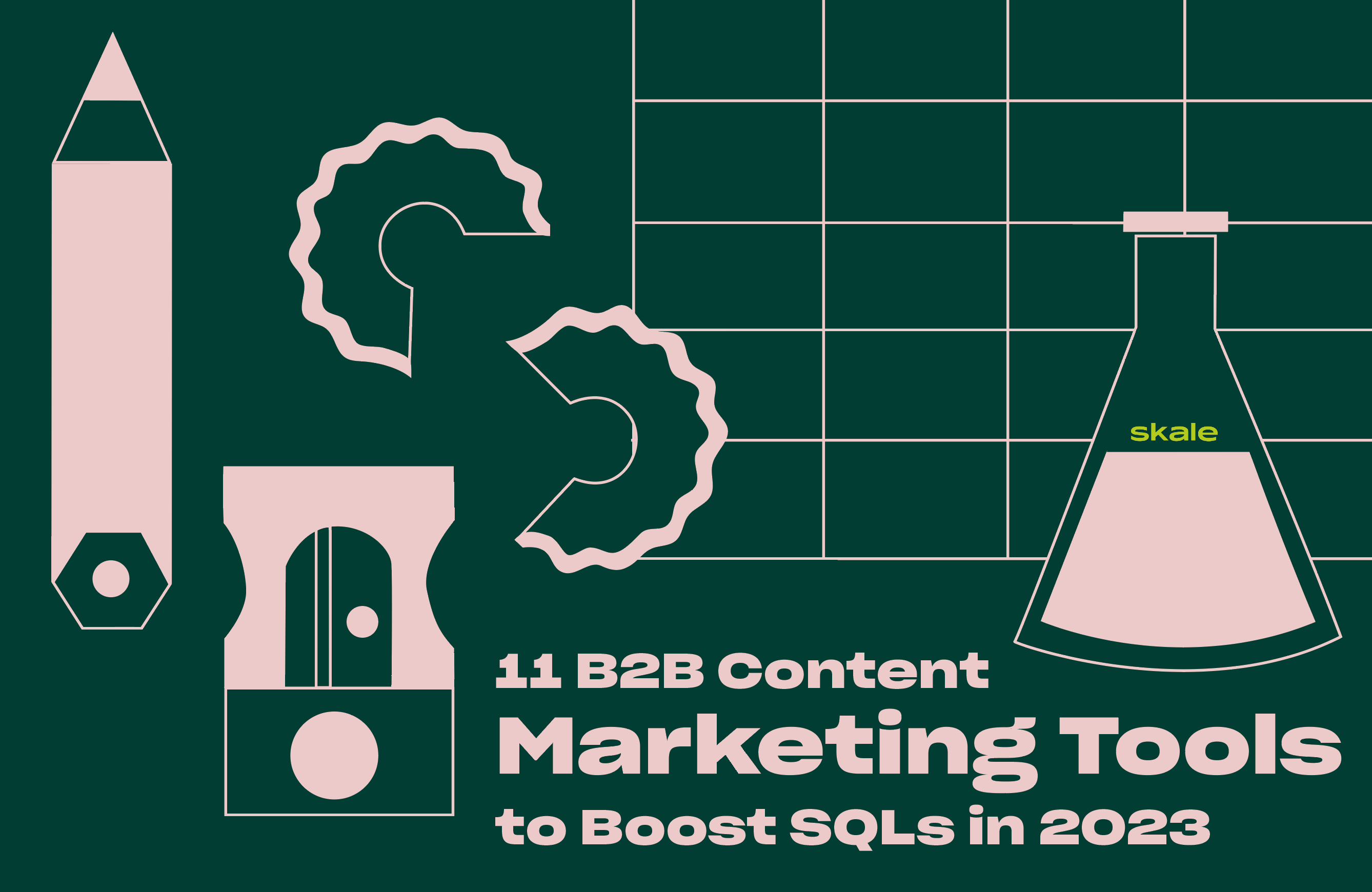
13 B2B Content Marketing Agencies and Services to Generate Revenue in 2024
These B2B content marketing agencies can create strategies and content that generates serious revenue for your business.


Skale’s SEO content team will monitor your content metrics, perform full-scale audits, and show you where there’s room to grow.
Schedule a callIn the ever-changing world of digital marketing, content is indeed king. But for content to really deliver results, it must be consistently tracked and its performance carefully analyzed.
Understanding which content marketing metrics to track is essential: accurate measurement means companies can optimize their content marketing strategy, make more informed decisions, and boost organic traffic.
These metrics also provide valuable insights into areas such as audience engagement, conversion rates, and overall campaign performance.
In this guide, we’re going to explore the best metrics to help your content marketing strategy properly take off.
Are you ready? Let’s go.
Good question. With all the potential metrics you could be keeping an eye on, it can feel overwhelming trying to identify the most significant ones.
To keep it simple, here are the three key areas where B2B companies should be focusing their content-tracking efforts:
B2B marketers use content marketing metrics to understand how their content is performing. You might think of your content as high-quality, but if it’s not attracting the right users, it might not be worth it. Many companies choose to work with a specialized B2B content marketing agency to ensure they’re not just effectively tracking their content marketing metrics, but acting on them.
Bonus Read: Check out these SaaS Content Marketing Agencies

Save your team time when you partner with a B2B content marketing agency- we’ve listed the best in the UK.
Read the list
Your conversion rate is the percentage of visitors to a company website that performs a conversion action. Put simply, a conversion is anything a visitor does that will get them into your customer database. For B2B companies, conversion can refer to several different actions: downloading a white paper, clicking on a ‘request a demo’ link, signing up for a monthly newsletter, filling in a contact form, or any other action that the user might take to indicate interest in your product or service. In short, more engagement drives revenue generation.
Engagement rate is a highly useful B2B content marketing metric: in fact, B2B Content Marketing Insights for 2022 named website engagement as the metric offering the most insight into content marketing performance. In short, it’s the number of ‘engaged’ visits divided by the total number of visits. An engaged visit is any session that lasts at least ten seconds, involves more than one-page view, or leads to a conversion.
This metric indicates whether people are actually consuming your content—and how engaging it is. It’s relatively straightforward: the time from when your visitor arrives on a page to when they move to the next.
You can find out the average time on page using Google Analytics: a low average time on page is under 20 seconds, but this will range from page to page. For example, a landing page will have a lower average time on page than a detailed how-to guide. A consistently good time on page for your blog posts means that you’re creating content of value.
Following on from time on page, session time measures how long a visitor stays on your site, not just a single page. This often gives much more important insights. For example, a user might only spend 30 seconds on a long blog post, but then they may move from the blog to a contact form, and then request a demo.
B2B companies should be aiming for a session time of around two minutes. Your average session duration can also be found on Google Analytics.
Your website’s bounce rate refers to how frequently visitors to your website leave after only viewing one page. This metric can be very telling about your site’s quality: a high bounce rate could indicate poor user experience, long load times, or content that’s simply missing the mark.
However, the bounce rate you aim for might differ from page to page. A high bounce rate of 90% is almost meaningless for a blog page, as an article can be read without clicking through to another page.
Also known as CTR, click-through rate is a measure of the performance of your SERP-ranking pages. CTR is determined by dividing the total number of clicks by the total impressions. It will tell you how many people visited your sites out of the total number of SERP users searching for a specific query.
Click-through rate is important for keeping your website top-of-mind for target customers, as it directly affects your quality score. It’s a great indicator of what’s working and what isn’t when trying to reach your target users.
Probably the most straightforward metric, keyword ranking is a direct measure of how successfully you’ve optimized a page for SEO ranking— an important part of any B2B content marketing strategy. Keyword ranking shows how well (or badly) your target keywords are performing in SERPs (search results pages). The higher the ranking, the more visitors your website receives.
Organic visits refer to the number of website visitors reaching your website via organic search. Keeping a close eye on organic visits (using a tool like Google Analytics) is one of the most effective ways to measure the success of your content marketing efforts.
An MQL, or marketing qualified lead, is someone who’s interested in your products or solution. It can be an individual or organization, who has engaged with your content marketing efforts and has the potential to become a customer.
Measuring the number of marketing-qualified leads which become sales-qualified leads (SQLs) is another way to track the quality of the leads you’re generating. This is the moment at which a lead moves from the marketing team to the sales team: each type of lead requires different ads, outreach, and brand messaging.
“Lead quality is an indicator of a lead’s propensity to become a paying customer that fits within desired criteria. It is an essential consideration in B2B content marketing, as generating poor-quality leads offers no value and can result in wasted time or resources.
This is why we need to look deep into the funnel, rather than purely relying on shallow metrics like ‘leads’.
We can ask:
Answering these questions can keep us from being distracted by red herrings, which could otherwise throw us off the scent and inflate low-quality leads without moving the needle.”
–Alistair Pike, Growth Strategy Lead at Skale
Link building is a significant part of any B2B content marketing strategy. Whether it’s via guest blogging, social media links, or any other route, it’s a brilliant way to strengthen the relevance of your website and boost your position on SERPs. One of the easiest ways to measure your website’s backlinks is by using the Semrush Backlink Analytics Tool.
First up in email marketing metrics is open rate. When it comes to focusing on the right email marketing metrics, this is an important one. Open rate is the percentage of subscribers who open an email out of the total number of recipients.
In addition to email open rate, you should be looking at unsubscribe rate to get an overall picture of email marketing performance. It indicates the percentage of campaign recipients who unsubscribe from emails. A high rate points to weaknesses in your strategy, and can help to identify your target audience’s preferences and pain points.
Just like with your main website, the click-through and bounce rates of your emails are extremely helpful in signaling the health of your email campaigns. Click-through rate is the percentage of subscribers who click on a link in your campaign, while bounce rate refers to those who haven’t received your email due to their email addresses being invalid or undeliverable.
When it comes to social media content metrics, exposure is key. A brand mention is when your product or service is mentioned in a unique piece of user-generated content on social media. A successful brand mention can be either tagged or untagged, simply reflecting the number of people talking about your brand. In short, it’s an indicator of your relevance and reputation.
Brand search volume is a highly useful metric: it’s the number of times people have typed your brand name into search engines as a keyword. Accessible through Google Search Console, brand keyword search volume and clicks can indicate the success of your website or social media campaign.
Reach is an indicator of the size of your audience, and audience growth rate. This which can be accessed through each social media platform (Facebook, LinkedIn, Instagram, and Twitter all offer possibilities to track your reach/impressions), shows the total number of people exposed to a social media post within a period at least once.
Applicable to both your website and your social media channels, monitoring the number of returning visitors is one way to determine how much value users are finding in your content. It’s particularly important within the B2B sales funnel, where providing helpful information is crucial to driving organic traffic and increasing conversions. To increase your reach, you may want to consider implementing interactive B2B content or updating existing content to better suit user preferences.
Vanity metrics can be nice to have, but they can also be big-time-wasters.
So what are they?
They’re metrics that make your business seem impressive but don’t actually provide any insights of real value. They don’t bring much to the table when you’re looking to understand your own performance—they’re not much use when it comes to developing a marketing strategy.
However, they’re not necessarily bad, and some may be relatively informative (e.g. rank and traffic).
Here are a couple to be aware of:
When it comes to measuring the right content marketing metrics, it’s quality over quantity. You need to go in with an idea of the information you want to get hold of, obtain it, and then develop your content marketing strategy to reflect this new data. Content marketing metrics have vast potential to help you bring in new (paying) customers, and with this knowledge, you should be better able to use them to your advantage!
“Ultimately, revenue is the most important metric, though it’s not always the most useful for decision making and forecasting. Increased revenue is a lagging indicator of successful content marketing efforts.
While tracking revenue is essential, it’s important to track leading indicators as well. For sales-led businesses, keep eye on SQLs / SQOs and MQLs as signals that your efforts are on the right (or wrong) track, and as predictors of possible future revenue. For product-led businesses, metrics like free trial signups and qualified signups can offer similar insights.”
–Alistair Pike, Growth Strategy Lead at Skale
Interested in further streamlining your content marketing strategy? Get in touch today and book a call.
Learn more about
B2B CONTENT MARKETING

13 B2B Content Marketing Agencies and Services to Generate Revenue in 2024
These B2B content marketing agencies can create strategies and content that generates serious revenue for your business.
![Ignite Engagement: 9 B2B Content Marketing Ideas [with Expert Insights]](png/skale-december-4-360x230.png)
Ignite Engagement: 9 B2B Content Marketing Ideas [with Expert Insights]

11 B2B Content Marketing Tools to Boost SQLs in 2024
We’ve listed top tools to help you research, conceptualize, create & publish content to support your business. Support your business with user-centric content.